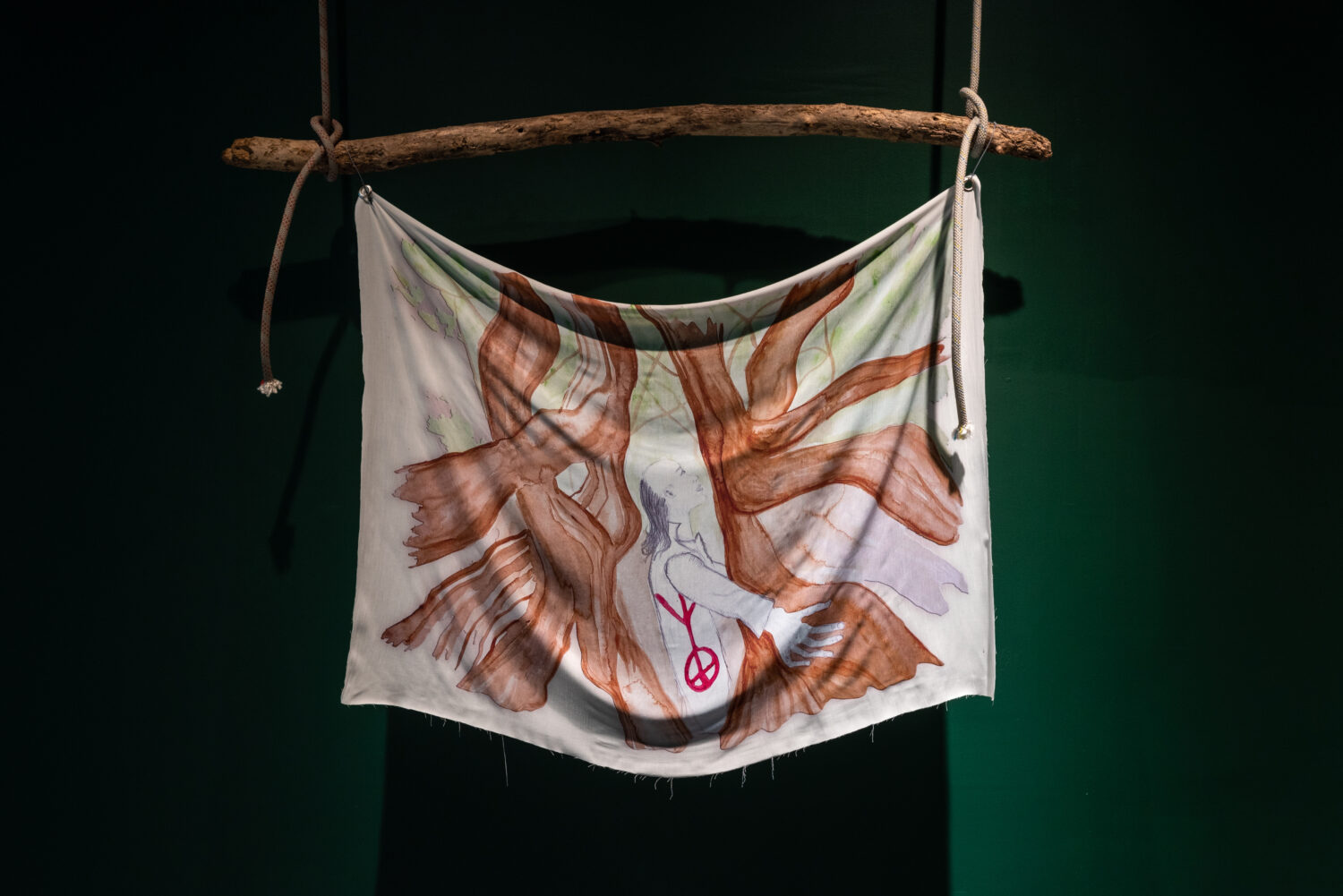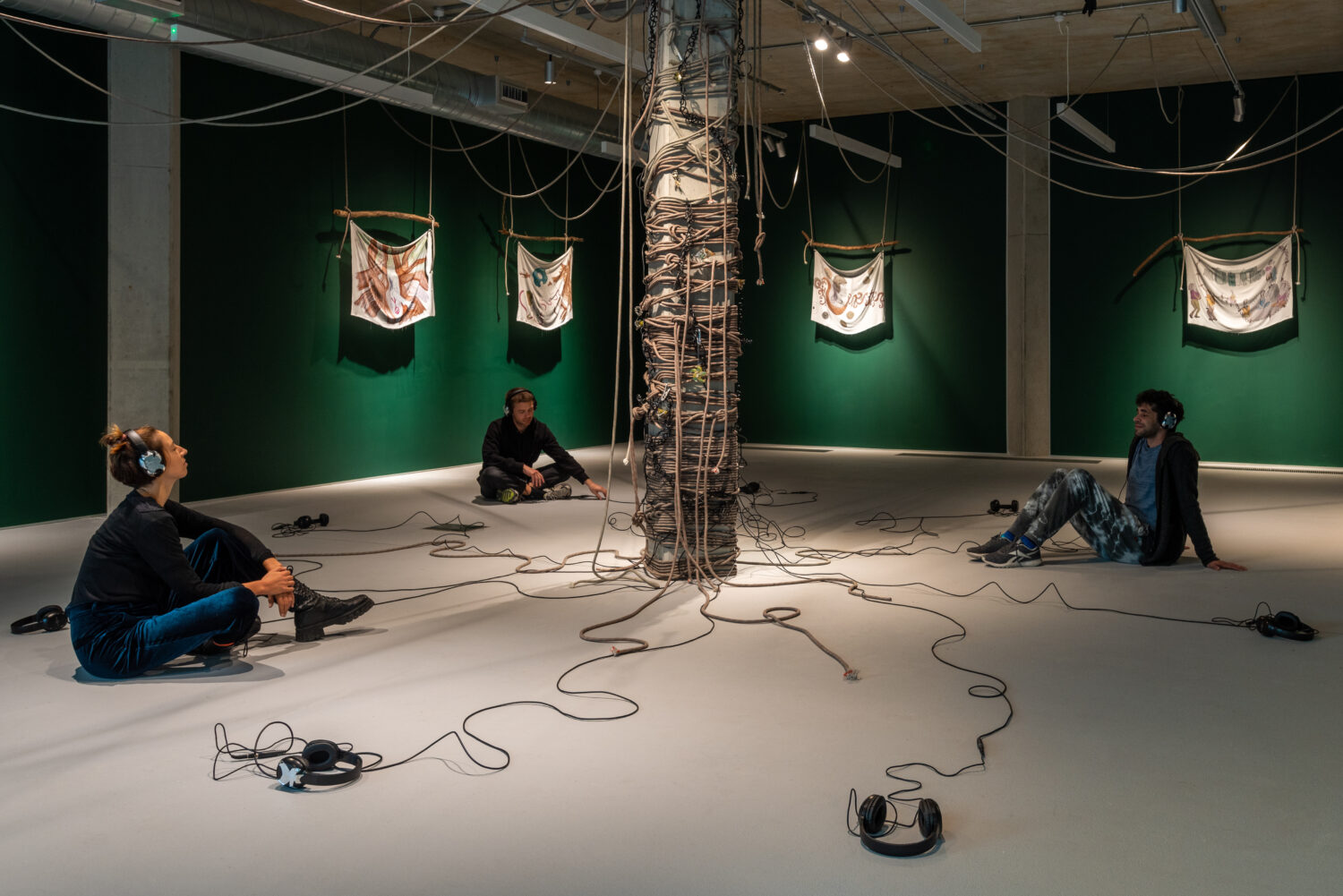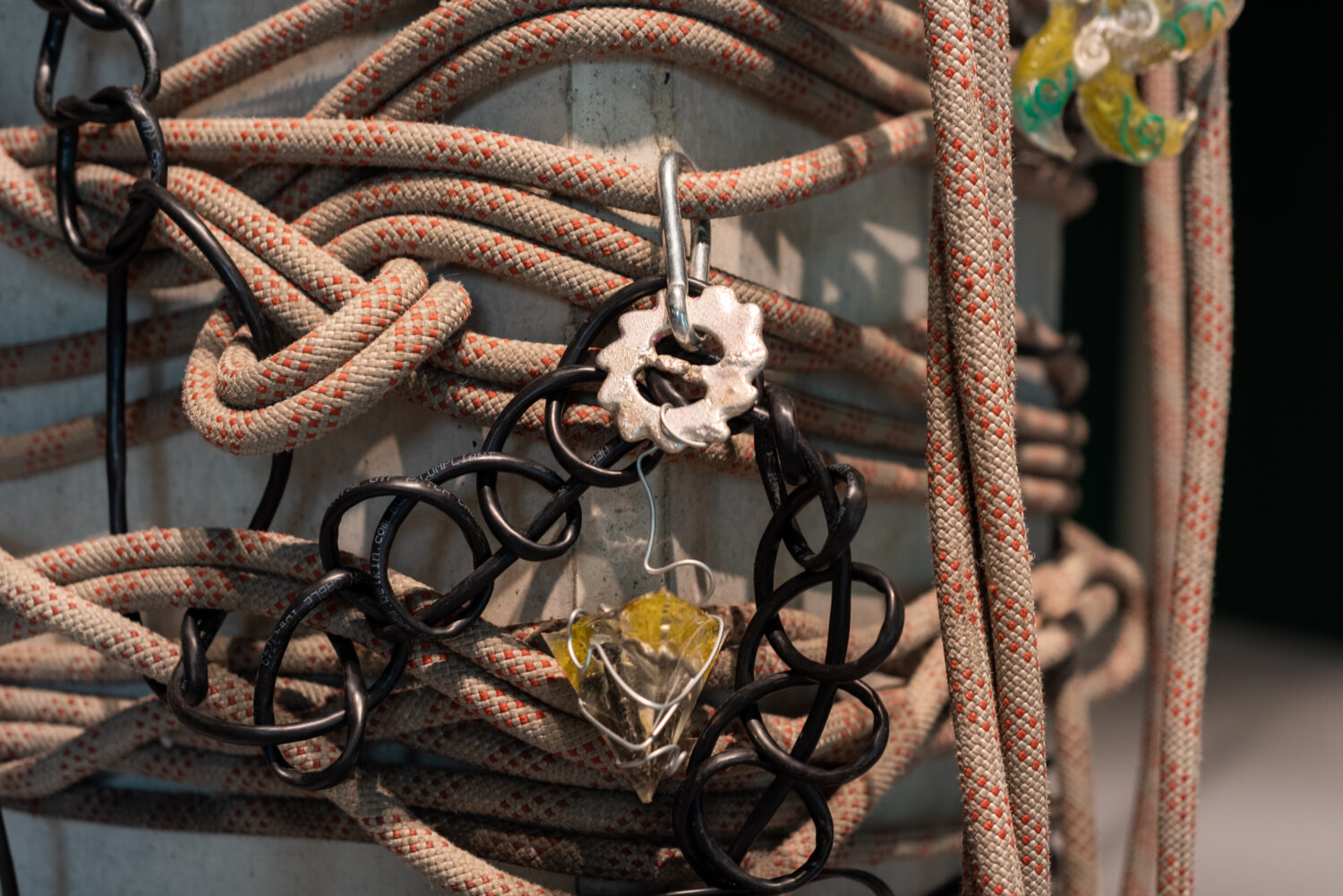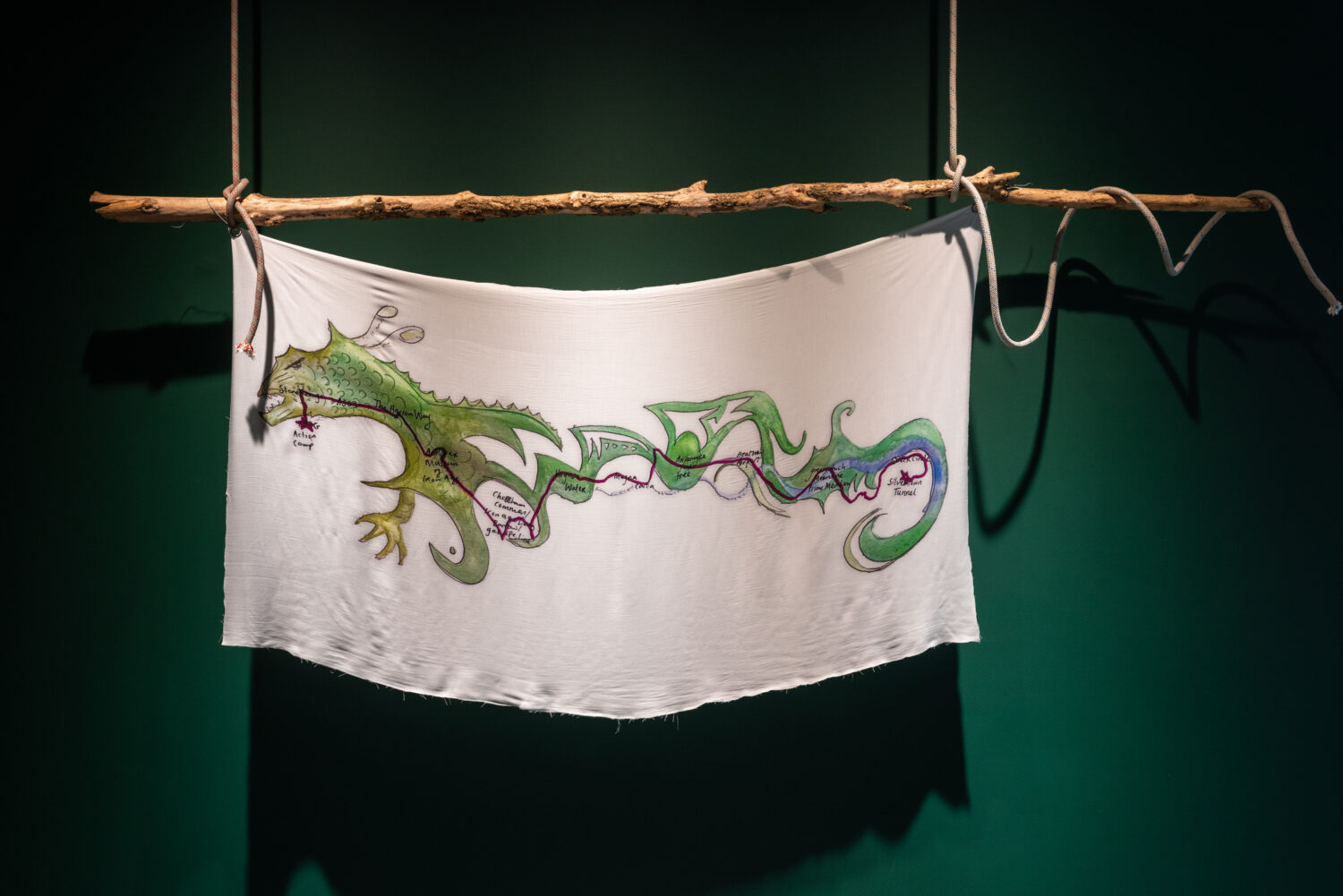Interview: bones tan jones On Spirituality, Sculpture & Saving The Planet
By Something CuratedLondon-based artist and performer bones tan jones’ practice proposes an optimistic dystopia, one that is envisioned through a queer lens. Through pop music, ritual, craft, sculpture, alter-egos, and moving image, tan jones weaves a mycelial web of diverse narratives which aim to connect, enthral and induce audiences to think more sustainably and ethically. Open now and running until 21 December 2022, London’s QUEERCIRCLE presents Tunnel Visions, a solo exhibition by tan jones, their first institutional presentation in the UK. A site-specific installation within QUEERCIRCLE’s main gallery space, Tunnel Visions manifests as a 4-metre high, central monolith that pays tribute to a 2,500-year-old Anckerwyke Yew tree. Later next month, the artist will present a workshop in collaboration with Serpentine, exploring what survival could look like to a community of people of colour, queer folks and beings who exist beyond the boundaries of society. To learn more about tan jones’ practice, the new exhibition and upcoming workshop, Something Curated spoke with the artist.

Something Curated: Can you give us some insight into your background and journey to art-making?
bones tan jones: I’ve never not wanted to be an artist. My secondary school art teacher told me it’s the only profession she thought she could see me doing. I am not sure I see it as a job or profession as I tend to see it more as a spiritual practice, and like all practices, it takes work, dedication, love and commitment. I studied sculpture (at CSM), and although the work I create expands through many mediums, I still think of all my art-making as sculpture. We can sculpt sound, sculpt space and sculpt feelings.
SC: What is the thinking behind your new site-specific installation at QUEERCIRCLE?
btj: The installation at QUEERCIRCLE foremostly seeks to raise awareness and draw attention to the destructive projects of the Silvertown Tunnel and the A303 road expansion; both tunnel projects can still be halted or their impact on the community and the earth lessened, if we act now. Silvertown Tunnel is being dug directly under QUEERCIRCLE, and the site can be seen from the window of the gallery. In the audio work, I speak to campaigners from the Stop Silvertown Tunnel coalition about the devastating impacts this could have on Newham and Greenwich, two of the country’s most polluted boroughs. The A303 road expansion wants to build a tunnel under the sacred land around Stonehenge in Salisbury, digging into the sacred chalk earth. The installation is an insight into the journey I took on foot from one tunnel to the other and the sights, sounds and experiences I had along the way. Through illustrations and audio storytelling, the audience is invited to walk with me.

SC: Could you expand on the pilgrimage you undertook ahead of the exhibition?
btj: The pilgrimage began at the mouth of the Silvertown Tunnel, on June 15, 2022, 6 days before Summer Solstice. The tunnel had not begun to be drilled yet (they now have begun drilling into the earth). I walked along sacred ley lines (earth energy lines) to sacred and non-sacred sites. I stopped at places such as GMT prime meridian (where time was invented/controlled), a 2,500 year old yew tree, and an iron age long barrow turned gas pipeline. Along the way, I used my voice as a healing tool. Similar to traditional Chinese medicine where meridian points in the body are stimulated through needles, we can stimulate the energy points upon the earth with our feet, our intentions, and piercing the veil with our voices. Song is our sacred healing tool, and a lot of our ancient healing songs have gotten lost over years of ‘growth and progress’. We must rewrite them. The pilgrimage was a journey not only to the stones, but also back to the voice of the land. The final 2 days of the pilgrimage, I walked the Harrow Way, arguably Britain’s oldest road, possibly older than the Ridgeway and it runs directly to Stonehenge (from Dover) and beyond. I walked this ancient path through industrial estates and fields, zooming through time lines in my mind.

SC: What do you hope to achieve through the project and do you see it as something that will continue to evolve?
btj: I hope this project helps to raise awareness and highlight two very pressing matters: the Silvertown Tunnel and the A303 road expansion, and the devastating effects it will have on the wider ecosystem and communities. I would love us all to reconnect back into the land with our voices again, to take life at the pace of foot, sometimes, and to breathe the way a tree breathes – to know the wisdom of a 2,500 year-old tree and the stillness within that. The pilgrimage is never ending, even after I returned from the 6 days / 2 weeks away living on the land (as I spent time after the walk at Glastonbury Festival; performing as my music project YaYa Bones at multiple stages and with a queer collective The Sistxrhood). Even as I spent the rest of the summer in the city, and on tour across Europe as YaYa Bones, song, land connection and energy healing ley lines still spoke to me, and my feet never stopped tingling from the walk – a reminder of the gruelling 6 days on foot. I would love to do many other intentional walks and pilgrimages in the future, there are so many places on this sacred Isle of Avalon (the UK) that I wish to connect to. Hopefully, this time, with new knowledge and understanding of what an epic walk entails, to pack lighter, to not be constrained by the shackles of time, and to keep connecting with the world around you at the pace of the trees.

SC: Are you able to tell us about your forthcoming performance to be presented in collaboration with the Serpentine?
btj: We have a wonderful series of workshops throughout the run of the show until December 21, 2022 (Winter Solstice); and on November 19, in collaboration with Serpentine, I will be hosting an anti-pollution balm making workshop. We will create herbal balms from natural and foragable plants that help cleanse our systems and protect us from harmful city pollution such as dust, fumes and toxins. It is in partnership with the Serpentine’s summer show Back to Earth, a series which I have been a part of, with a poster in the summer exhibition which read “What if the Plants Named Themselves?” made out of woad pigment and bubble tea juice.
Feature image: Installation view of bones tan jones: Tunnel Visions. © Deniz Guzel